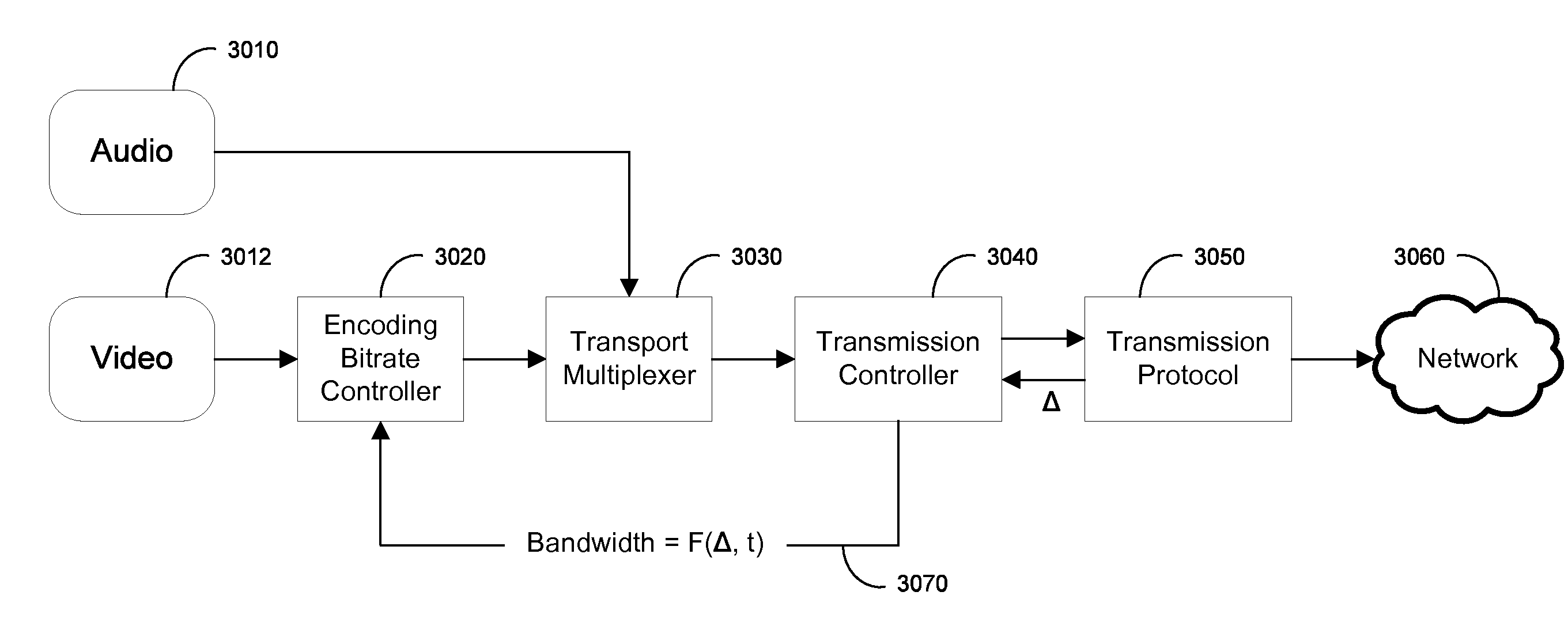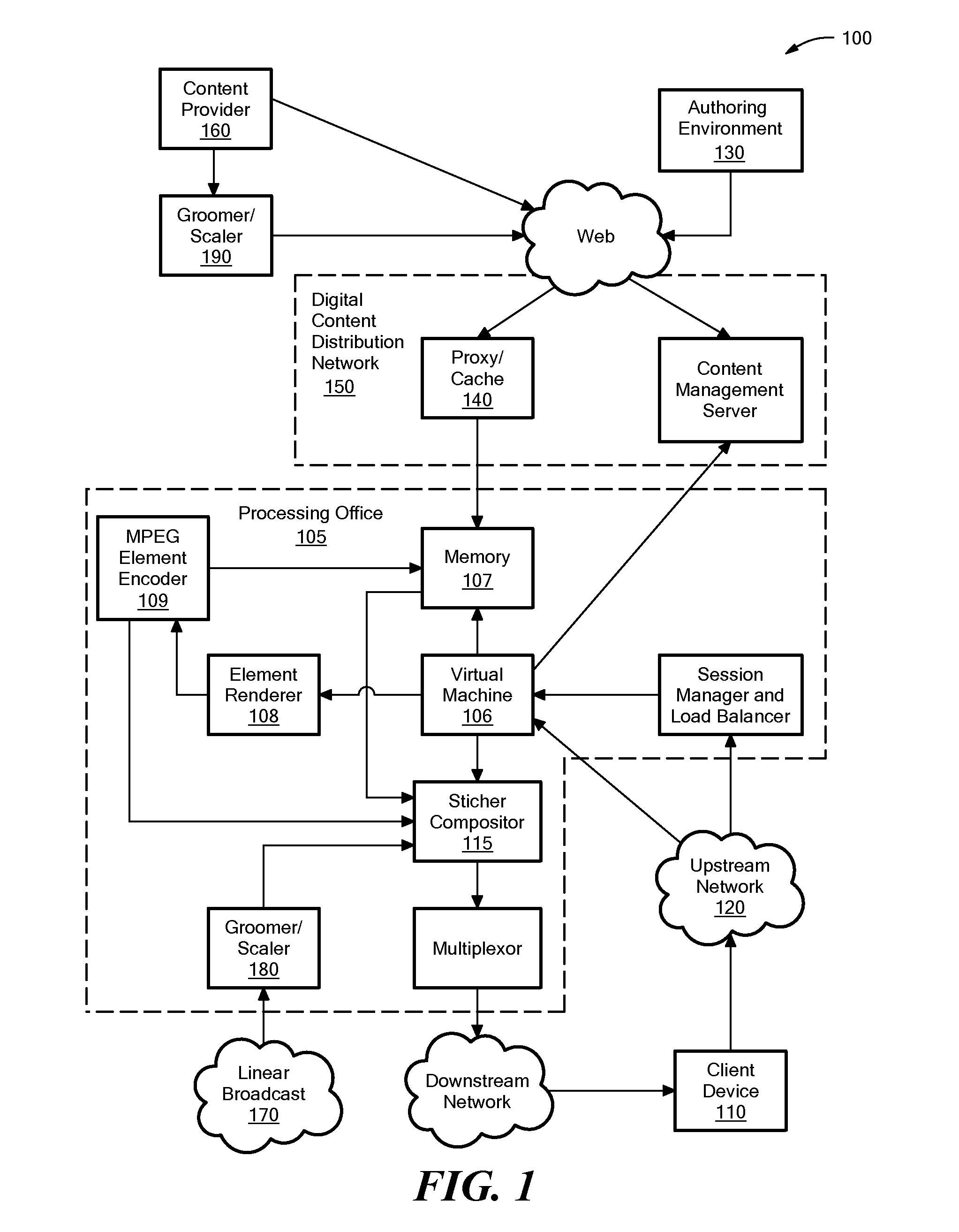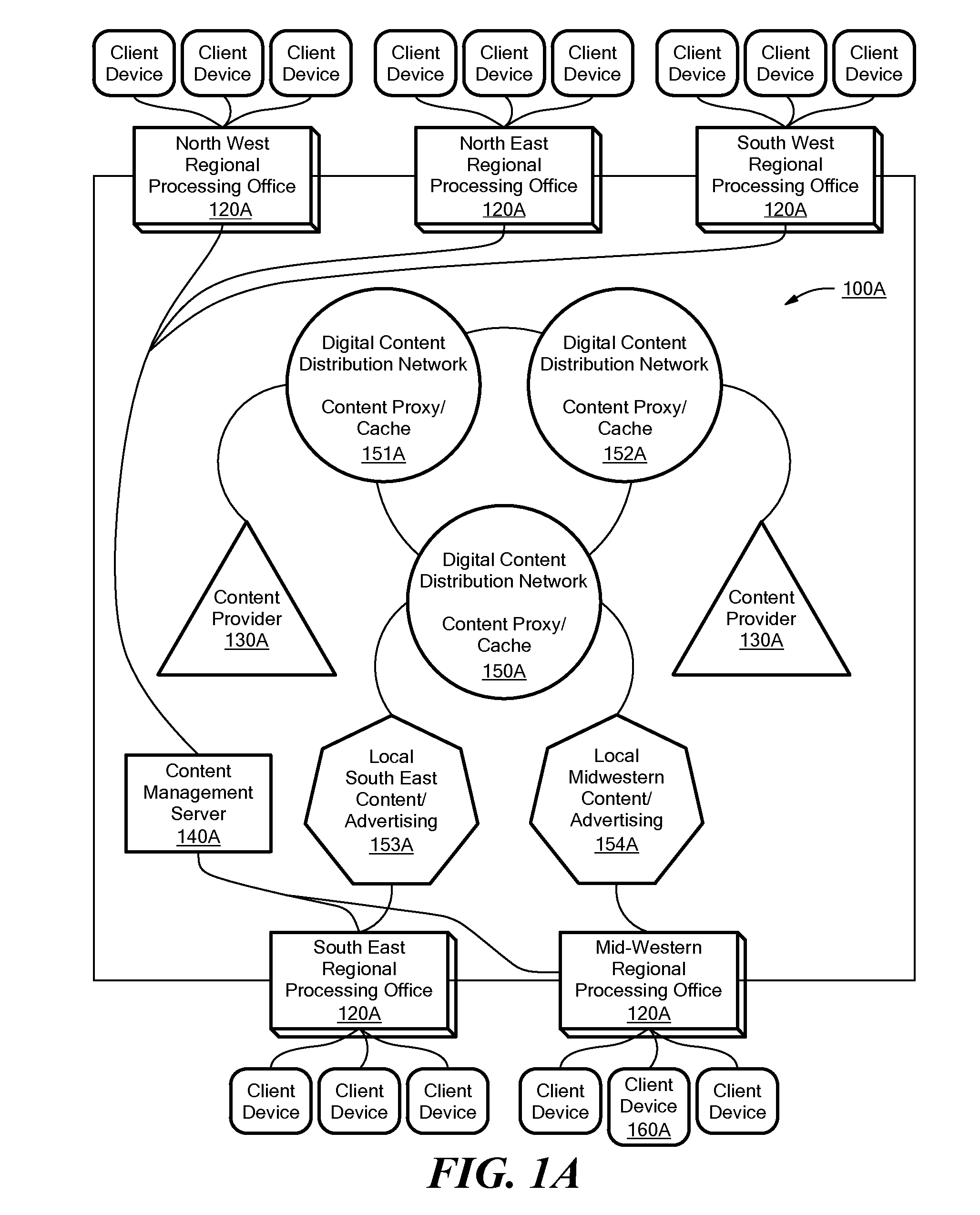Providing Television Broadcasts over a Managed Network and Interactive Content over an Unmanaged Network to a Client Device
- Summary
- Abstract
- Description
- Claims
- Application Information
AI Technical Summary
Benefits of technology
Problems solved by technology
Method used
Image
Examples
Embodiment Construction
[0059]As used in the following detailed description and in the appended claims the term “region” shall mean a logical grouping of MPEG (Motion Picture Expert Group) slices that are either contiguous or non-contiguous. When the term MPEG is used it shall refer to all variants of the MPEG standard including MPEG-2 and MPEG-4. The present invention as described in the embodiments below provides an environment for interactive MPEG content and communications between a processing office and a client device having an associated display, such as a television. Although the present invention specifically references the MPEG specification and encoding, principles of the invention may be employed with other encoding techniques that are based upon block-based transforms. As used in the following specification and appended claims, the terms encode, encoded, and encoding shall refer to the process of compressing a digital data signal and formatting the compressed digital data signal to a protocol ...
PUM
 Login to View More
Login to View More Abstract
Description
Claims
Application Information
 Login to View More
Login to View More - R&D
- Intellectual Property
- Life Sciences
- Materials
- Tech Scout
- Unparalleled Data Quality
- Higher Quality Content
- 60% Fewer Hallucinations
Browse by: Latest US Patents, China's latest patents, Technical Efficacy Thesaurus, Application Domain, Technology Topic, Popular Technical Reports.
© 2025 PatSnap. All rights reserved.Legal|Privacy policy|Modern Slavery Act Transparency Statement|Sitemap|About US| Contact US: help@patsnap.com



